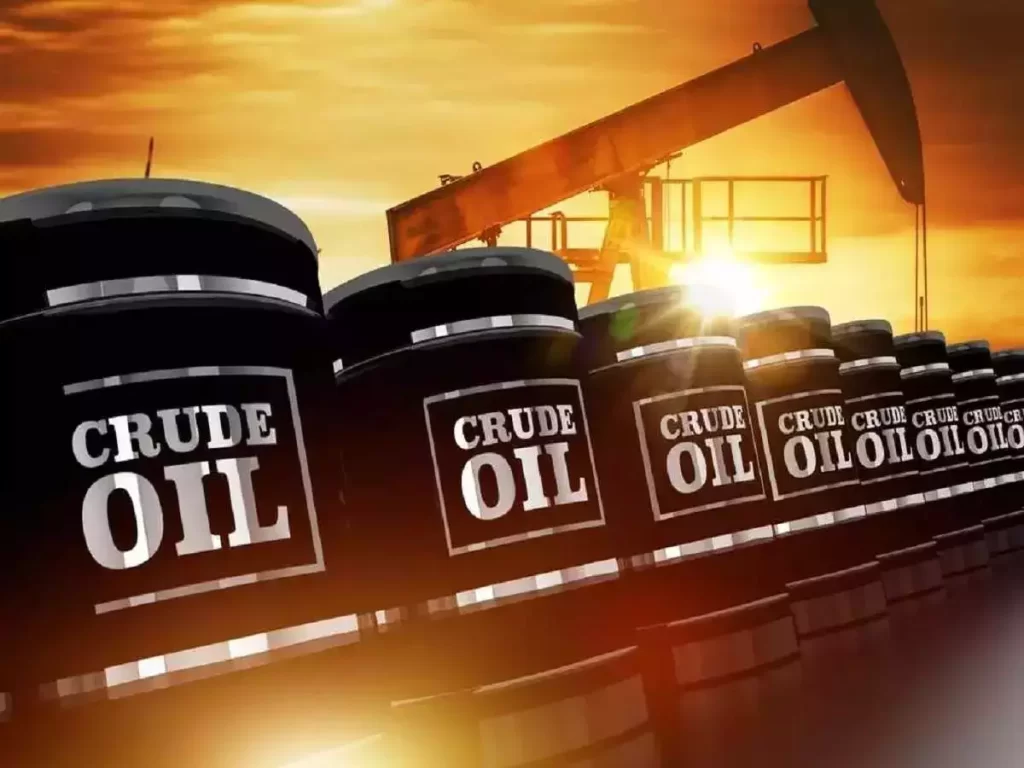Maibam Warish and Mr.Altaf Azam Department of International Relations-West Asian Studies, Jamia Millia Islamia New Delhi.
I. Introduction
When cities around the world are experiencing an eerie desolation induced by state-imposed lockdowns, there is a frantic slump prevailing in the global oil markets. On Monday, the 20th of April, 2020, an empty barrel of crude oil was worth much more than a barrel full, as Oil traded at a historic low of -37 $ a barrel at the WTI. However, from India’s perspective, the majority of its crude basket represents oil from Oman/ Dubai axis which is based on Brent crude benchmark prices, which too sank to a two-decade low of just under 16 $ a barrel, but well above the WTI. A historic low in oil prices is nothing short of a celebration for the 3rd largest consumer of Oil with over 80% reliance on oil imports for its petroleum needsii. However, the ground reality is quite the opposite.
Contrary to such low global oil prices, there will be very marginal impact on the Indian economy and fuel prices in India. With all flights grounded, coupled with a nationwide lockdown on passenger mobility, India has witnessed a 40% dip in its petroleum needs. A significant consequence of such circumstances is also indicative of a bleak predicament for any prospective energy trade between India & the US for the foreseeable future.
II. US-India Trade Relations
Washington led by President Trump has been constantly lobbying to secure trade parity with its trade deficit counterparts. Energy cooperation emerged as a key pillar of Indo-US strategic partnership. This was evident from the fact that the energy trade between the two nations touched $7.7 billion last year — this intensity of energy exchange being a story of the last two years alone. Pressurized by the US to forgo oil Imports from Iran, Delhi thus resorted to additional supply from the Arab producers & a strategy to diversify its energy mix, securing supplies from African states & the US. In 2019, India increased its US oil imports to about 1,84,000 barrels per day, four times more than in 2018, and up from zero imports just four years ago, making it the sixth-largest supplier of crude oil, and the fifth-largest supplier of LNG to India. Although oil imports from the US have quadrupled over recent years, the quantity still remains minuscule, forming just about 3 % of India’s import mix. Energy sourcing from the US is not the cheapest option for India but is crucial to trim the trade imbalance between the two countries & to garner better relations with the incumbent administration presiding in the White House. America’s trade deficit with India declined significantly from more than $22 billion in 2016-17 to around $17 billion in 2018- 19 as India initiated buying oil and gas from the US in 2017iii. This is amicable to either side as India under Prime Minster Modi seeks to garner good relations with the US & the US seeks to narrow its trade imbalances. In fact, talks on energy imports were a crucial aspect of discussions on the side-lines of Howdy-Modi campaign & President Trumps visit to India in February 2020. However, the benefits of such trade cooperation seem marred by uncertainty following the prevailing pandemic-induced global slump in oil demand & prices.
III. Impact on the US Oil Industry
The Shale Oil revolution which propelled the US to the largest producer of oil in recent years & was crucial in transforming it from a net importer to a net exporter is witnessing its darkest days. The industry, whose growth allowed President Trump to boast of cutting US dependence on Middle Eastern oil and freed his hand to sanction energy exporters from Iran to Russia, is now on its knees. Producers across the US oil patch, with higher production costs than international rivals, are in acute distress, pleading for Washington to ease the pain by cutting foreign oil imports or providing the industry with Covid-induced bailouts to stave off bankruptcy and job losses. Unlike the government- owned oil companies across the globe, US shale mostly operates as independent private ventures without any government backing which makes it acutely vulnerable in such circumstances. The industry has been hit by a perfect storm of historically depressed energy demand due to coronavirus containment efforts & a shocking oil glut prompted by the falling out of Saudi Arabia with its OPEC+ counterpart- Russia. For American shale oil producers to stay in business, average oil prices at the WTI needs to hover at $40 to $45 per barrel at the very minimum due to the relatively expensive extraction costs. In contrast, Saudi oil is the cheapest to produce in the world at an average of $8.98 per barrel and Russian production costs average at $19.21 per barreliv. Just covering production & operational costs in such a depressed global economic environment will leave American shale producers lacking the necessary funds for shareholder dividends and basic corporate costs.
Already saddled with extensive debt, trading at distressed levels, and effectively shut out of credit lines by banks, the industry is going to suffer historic shutdowns. The effects are already visible in the American shale oil industry. About 100 oil and gas companies could be filing for bankruptcy over the next year, a figure that could balloon if prices for WTI stay below $40 per barrel. While shale oil had propelled the US to become the world’s largest petroleum producer, averaging nearly 17.9 million barrels per day earlier this year, US total petroleum output could significantly fall by 2 million to 3 million barrels per day by the end of 2020. This would reinstate the US back to a net Importer of oil & substantially cut short Washington’s ambitions of greater oil exports to India.
IV. Implications of the US-brokered Oil Deal & the discord between Saudi Arabia – Russia
Oil prices had taken a fall after the Saudi-induced oil glut in the world market following the fallout with its OPEC+ counterpart- Russia, well before the pandemic had brought the world to a standstill. Mix the glut of oil in the market along with the collapse in global economic activity & we have got a lethal concoction for a drastic decline in oil prices.
The Trump brokered oil deal which concluded a collective commitment to cut 9.7 million in oil production starting 1st Mayvi is believed to be too little, too late with the collapse in global demand jeopardizing a further fall in oil prices over the vast mismatch in global oil demand & supply.
Since Saudi Arabia’s failed attempt in 2014 to sabotage the US shale oil industry by flooding the global markets with surplus supply, the Saudis and Russians have been giving unconventional American oil a free ride. Clearly, this has come to an end now. This drop in US output is likely to continue for some time. As America’s goal of energy independence slips away, the US government will need to appease, collaborate and seek favor with those countries that are feeding its massive, oil-hungry economy as it has in the past. Foremost among these is Saudi Arabia, which has evinced its newfound ability to control the future trajectory of oil markets by showing how truly vulnerable the American oil industry is to the kingdom’s energy policy. In this dynamic environment, the US will be forced to recalibrate its foreign and economic policies to face the new reality of energy interdependence. It further reinforces the fact that Saudi Arabia is the ultimate heavyweight in the oil market, & that India still remains heavily reliant on the Arab producers for securing its energy needs while prospects for Indo-US energy trade remain stalled for the time being.
V. Impact on Indian Government
Retail prices of petrol, and diesel in India, to a large extent, constitute of taxes. The government has steadily increasing these taxes over the years to generate additional revenue for state coffers. In fact, the government last month increased duties on petrol and diesel by Rs.3 per liter, the steepest hike since 2012vii, after crude oil prices went crashing down. Despite this, with the country on lockdown until 3rd May, the govt. has not been able to realize much benefit as petroleum sales are dismal.
VI. Impact on the Indian Oil Industry
Most of the oil marketing companies (OMCs) like BPCL, HPCL, and Indian Oil Corporation (IOC) do not engage much in risky futures hedging & go for safe six months to one-year contracts, whereas the global norm is about three months. Following a sharp decline in demand, oil companies have reduced production capacity by 50% & Estimates indicate that almost the entire 85 million barrel storage capacity with the state-run companies is full. This clearly indicates that the oil industry is not in a position to capitalize on the dramatic sink in global oil prices.
Even if we think of Strategic Storage to leverage falling oil prices, our reserve capacities are not more than 5.3 million tones (MT) for three months, which is a small portion of our overall 200 MT plus purchasesviii. The size of India’s Strategic Oil Reserves which are believed to be half filled to its capacity already, are not big enough to absorb the current shock in the oil market and the current crisis has become a missed opportunity for the country that could have otherwise stirred cheap oil in large quantities in reserves. With the situation developing on the demand front, a lot of crude from state-run oil companies will be directed to meet this demand rather than reaping the benefits of cheap oil from across the globe.
Author’s Biography
Maibam Warish is a Post-Gratute scholar pursuing his Master’s in International Relations specialization in West Asian Studies, Jamia Millia Islamia, New Delhi. His field of interest include geopolitical conflicts, India’s West Asia Relations, Energy security, changing power dynamics in the West Asian region, Israel’s politics, and the issues related to democratization in the region. Mr. Altaf Azam is a Post-Gratute scholar pursuing his Master’s in International Relations specialization in West Asian Studies, Jamia Millia Islamia, New Delhi.He is ken on understanding the geo-political dynamics of the region and how it has become a hot bed of conflicts and civil-unrest. He is keen to study the influence o the region on global energy security.
REFERENCES
ihttps://www.businesstoday.in/latest/economy-politics/story/why-petrol-prices-wont-fall-even-though-us-
crude-oil-costs-0-256097-2020-04-21
iihttps://bangaloremirror.indiatimes.com/bangalore/others/how-india-should-exploit-the-crash-in-crude-
prices/articleshow/75334432.cms
iiihttps://economictimes.indiatimes.com/industry/energy/oil-gas/after-trumps-india-visit-oil-and-gas-imports-
from-united-states-set-to-increase/articleshow/74311585.cms?from=mdr
ivhttps://edition.cnn.com/2020/04/23/perspectives/american-oil-boom-end/index.html
vhttps://www.cnbc.com/2020/04/22/us-oil-production-plunges-as-the-industry-retrenches-and-more-cuts-
are-expected-after-a-price-crash.html
vihttps://edition.cnn.com/2020/04/12/energy/opec-deal-production-cut/index.html
viihttps://www.businesstoday.in/latest/petrol-diesel-rate-price-today/story/govt-hikes-fuel-excise-duty-by-rs-
3-per-litre-steepest-in-8-years-to-exploit-crude-price-crash-252085-2020-03-14
viiihttps://www.businesstoday.in/latest/petrol-diesel-rate-price-today/story/govt-hikes-fuel-excise-duty-by-rs-
3-per-litre-steepest-in-8-years-to-exploit-crude-price-crash-252085-2020-03-14




